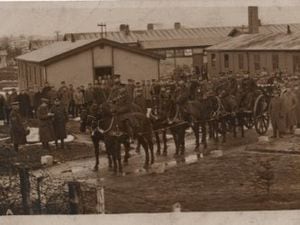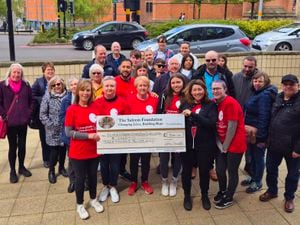Sandwell's drug death rate one of lowest in the country
Sandwell has one of the lowest drug death rates in the country, according to the latest figures.

The borough has a death rate from drug abuse of 2.2 per 100,000 according to new figures from the Office for National Statistics, by some margin the lowest in the West Midlands.
Sandwell director of public health Dr Lisa McNally said the figure also put the borough among the10 lowest death rates in the entire country, in what she said was a remarkable reversal of the well-known link between economic deprivation and drug deaths.
She said the figure was less than half the national rate per 100,000.
Birmingham had the worst death rate in the region during the period from 2018-2020, with 7.8 deaths per 100,000. The rate was also high in Wyre Forest, at 7.0, Cannock Chase, where it was 6.4. and Wolverhampton where it was 5.9.
In Walsall the death rate was below the regional average of 5.3 at 4.7, followed by 4.6 in Telford & Wrekin.
In Dudley the number of deaths stood at 4.2 per 100,000, followed by Stafford at 3.8 and Shropshire at 3.7.
Dr McNally said there was no room for complacency, with both local and national death rates on the rise.
She said to counter that trend, Sandwell Council would be spending an extra £400,000 in local drug services this year.
This would include increasing the provision of naloxone, a life-saving medicine which is used to reverse the effects of a heroin overdose.
She said it was important that the drug was available in a wider range of locations so it could be dispensed quickly in the event of an emergency.
"It's no good having naloxone if the only place you can get is down at the doctor's surgery," said Dr McNally.
"We're trying to get it into the places where overdoses are more likely to happen, such as in hostels and certain services where people go to get help."
She said referral routes also needed to be expanded, making it easier than ever for someone to get the help they need.
“Drug misuse destroys lives and ends lives, it also has a devastating effect on families and communities," said Dr McNally.
"I obviously welcome the fact that we have a very low rate of drug misuse in Sandwell, but we have to keep pushing it down further. The stakes are too high for us to become complacent.”
Councillor Suzanne Hartwell added: "Our public health response to this issue is clearly having a positive effect.
"We must keep working hard to alleviate the harm of drug misuse to individuals, families and our community."
Dr McNally cited the case of 39-year-old "Annie" – not her real name – whose dependency on crack cocaine, heroin and alcohol caused her to lose her job, her friends and her relationship.
"She had three children who were placed in the care of Annie’s parents when she became a victim of drug-related crime which was incredibly traumatic," she said.
This led to Annie seeking help with Sandwell Council’s drug treatment provider Cranstoun.
"Annie entered into opiate substitute therapy and has been supported to make changes to her life," said Dr McNally.
"She was supported to move homes to protect her, and her children have returned. She is now drug free and about to leave treatment."





